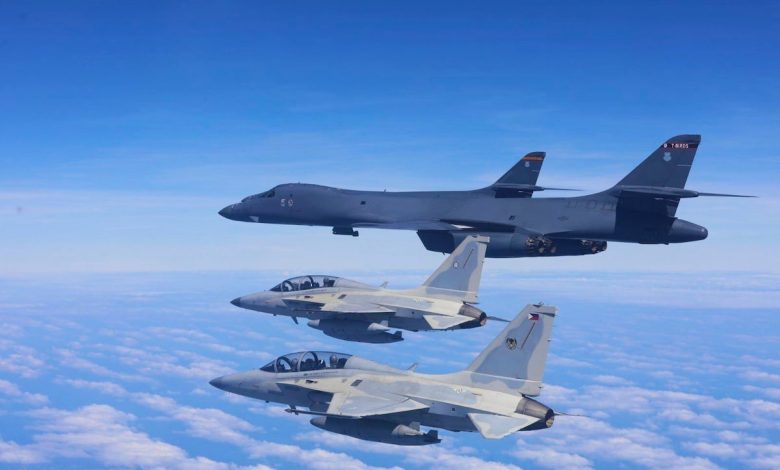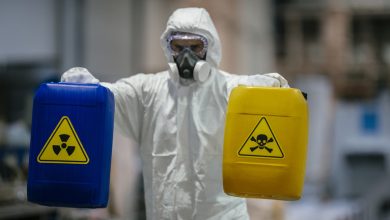US-Philippine task force to reestablish South China Sea ‘deterrence’

BANGKOK — The United States and the Philippines have announced the creation of a joint task force aimed at further deterring what U.S. Defense Secretary Pete Hegseth called Beijing’s “coercion” in the South China Sea.
It is the first of its kind in Southeast Asia, where not only the Philippines but also Brunei, Indonesia, Malaysia and Vietnam have overlapping claims with China in the sea, a major international shipping route.
Analysts tell Military Times the task force could help deter Beijing’s efforts to enforce its sweeping claims to the sea by allowing U.S. and Philippine forces to react much more quickly to Chinese ships in contested waters around the Philippines, where the two countries have often clashed.
Hegseth and his counterpart, Philippine Defense Secretary Gilbert Teodoro Jr., unveiled Task Force-Philippines on the sidelines of the Association of Southeast Asian Nations defense ministers’ summit in Kuala Lumpur, Malaysia, on Oct. 31.
“We don’t seek confrontation, but of course we’re ready to protect our interests, individually and mutually. And that’s why we’re publicly announcing the Task Force-Philippines here with you today,” Hegseth told a press conference.
He called it “another step in our cooperation, increasing interoperability, exercising and preparedness for contingencies, so that we can decisively respond to crises or aggression and reestablish deterrence in the South China Sea.”
The U.S. Pacific Fleet later added in a statement that the task force, which covers the full sprawl of the Philippines archipelago, will have about 60 dedicated staff and be led by either a one-star general or flag officer. The fleet said it would not involve new combat forces, offensive operations or permanent military basing.
RELATED
Rommel Jude Ong, a professor at Ateneo de Manila University, told Military Times that the task force is the culmination of growing cooperation between the U.S. and Philippines, which have been defense treaty allies since 1951.
He cited the annual Balikatan military exercise, the more limited joint task forces in past years, and a pact the two countries signed in 2024 to share classified military information.
“Those are developments that need to happen before you can actually have an operational task force,” he said. “Because they were resolved, a task force is now a viable mechanism.”
Now that it is viable, the two forces should be able to share sensitive intelligence “almost in real time,” said Jude Ong, a retired rear admiral who served over three decades in the Philippine navy.
Until now, operational information typically had to travel back and forth between Manila and Hawaii, where INDOPACOM is headquartered.
“That is a cumbersome way of doing business and is dependent on a secure communication setup that has very stringent protocols to use,” Jude Ong said.
“Having the [Task Force] Philippines based in Manila allows for a faster and convenient way of collaborating on combined operations … between the two allied militaries,” he added.
To truly deter China, he said, the United States and other Philippine allies would have to commit far more ships to patrolling the contested waters and maybe even basing them in the Philippines. In its statement, the U.S. Pacific Fleet ruled out basing its ships in the Philippines, but Jude Ong said he believed the task force may yet encourage the development of more related U.S. logistics in the country.
By helping U.S. forces react to events in the South China Sea in real time, though, the task force could still add some deterrence as it is, said Euan Graham, a senior fellow at the Australian Strategic Policy Institute, a think tank established by the Australian government.
“Part of the problem is that the Chinese have learned that the Americans come for exercises like Balikatan and then they sail off, and they [the Chinese] can very quickly come in and out from their new bases in Mischief Reef and elsewhere, and that obviously undercuts the American deterrence proposition,” he said.
Mischief Reef is an artificial South China Sea island that Beijing has turned into a military base.
The task force, Graham added, makes the U.S. “more agile and more responsive so that things don’t just have to get put all the way up the decision chain into INDOPACOM headquarters or Washington.”
He said the creation of a standing task force also helps reassure Manila and Washington of each other’s long-term military commitments should moods change in either capital.
Philippine relations with the United States have warmed under President Ferdinand Marcos Jr., who succeeded the more China-friendly administration of Rodrigo Duterte in 2022. Duterte’s daughter, Sara, however, who shares her father’s China leanings, is the current frontrunner for president in elections due by 2028.
“So, this [task force] may be part of the trend to institutionalize this alliance and other security partnerships as far as possible while the political window is open under Marcos. Because if the Dutertes get back in, that’s clearly not going to be good for the U.S.,” said Graham.
In the meantime, tensions continue to run high between Beijing and Manila, with several encounters around contested shoals in recent months.
Graham said the task force could, in time, help stabilize the situation by allowing U.S. forces to respond more effectively to the pressure being applied by China.
Starting off, though, he said it may face “teething issues” as both sides work out where to draw ships for the joint operations from, and that China may try testing the task force to see whether and how much those operations actually improve the Philippines’ defenses.
China may also react by scaling up its own patrols or blocking Philippines supply ships to some shoals more aggressively, said Abdul Rahman Yaacob, a security analyst and academic adviser at the Australian National University.
He said that would raise the odds of an accident, which could in turn stoke tensions further.
“Most likely it may lead to increased tensions, because once you have a task force, you have more military activities. … And how will the Chinese respond? Will [more] Chinese war ships actually patrol and try to monitor Philippines-U.S. activities?” he asked.
“More military activities mean more potential for accidents to happen.”
However Beijing reacts, Rahman Yaacob said the task force will force China to reevaluate its approach.
“This task force will … cement further the American military presence in this part of the world, and … this will force Beijing, or China, to actually recalculate its strategic policy vis-à-vis the Philippines and the rest of Southeast Asia,” he said.







